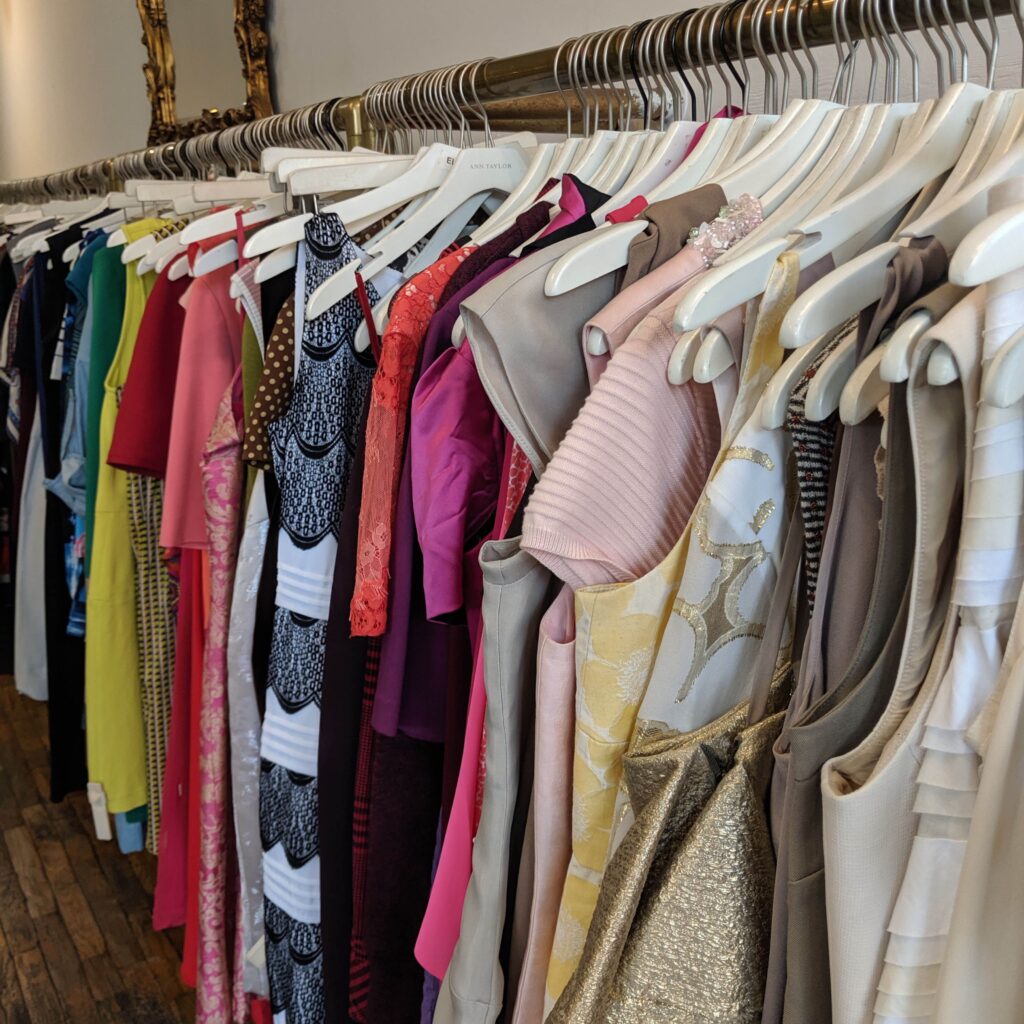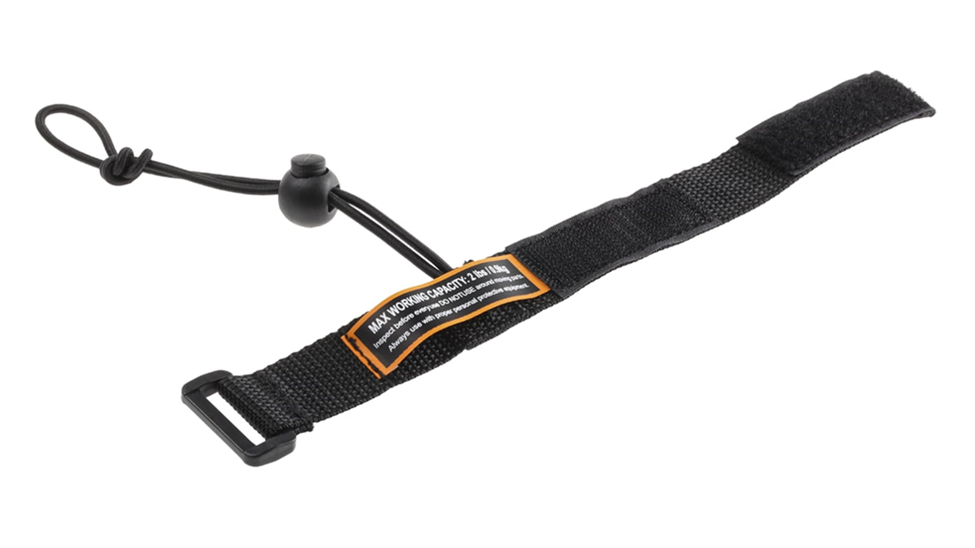Last Updated on April 23, 2024
Do you read the tags on your clothing? It’s a good idea to get into the habit of it: Doing this can tell you what materials your clothing is made from, and where it was made.
This matters, considering most of our clothing is made from polyester, aka a form of plastic. Polyester is made from non-renewable petroleum (crude oil) that’s extracted from the earth unsustainably.
Some of the links below may be affiliate links. For more information please see my disclosure policy.
To create polyester, 70 million barrels of oil are used annually, and turning this oil into polyester fabric releases a lot of toxins into the environment.
However, even if you choose more natural materials, like organic cotton, chances are it’s never just 100% cotton. Depending on what clothing item it is, there’s a good chance it’s combined with another fabric, like elastane.
For example, if you’re going to buy a nice pair of organic cotton leggings, there’s a high probability a small percentage of those leggings will also be made up of elastane.
This is because elastane is often used in combination with other materials to create stretchy clothing.
But what is Elastane? And is it sustainable? Here’s everything you need to know regarding elastane and if you should look for this material or avoid it in your next purchase.

is elastane natural or synthetic?
Elastane is a synthetic material that has qualities like that of rubber and is made from polymers, specifically polyurethane. This is a form of plastic and was invented to replace rubber in the 1950s. Rubber was somewhat hard to come by, and was subject to fluctuating prices, whereas elastane was cheaper to make.
Because of this, elastane does not biodegrade. That also means it is not compostable.
Also of note, elastane goes by several names: In the US and Cananda, it goes by the brand name Spandex. You may also see it labeled Lycra.
how is elastane made?
1. First, production of a prepolymer is needed. This is accomplished by mixing macroglycol with a diisocyanate monomer within a special type of reaction vessel.
2. Then when the dry spinning method is used, the prepolymer is reacted with diamine acid.
3. Next the solution is diluted with a solvent to make it thinner, which thusly makes it easier to handle. It’s placed inside a fiber production cell.
4. The cell spins to produce fibers and cure the elastane. Within this cell, the solution is pushed through a spinneret.
5. The fibers are then heated within a nitrogen and solvent gas solution. This transforms the liquid polymer into solid strands.
6. These strands are then bundled together as they exit the cylindrical spinning cell using a compressed air device.
7. To treat the elastane with a finishing agent, magesium stearate or another polymer is used. This prevents the fibers from adhering together.
8. Last but not least, the remaining fibers are spooled and then ready to be dyed or woven into fabric.

is elastane a good fabric?
Elastane is a good fabric in terms of its use to make clothing stretchy and form-fitting. It’s often found in activewear such as yoga pants, leggings, and sports bras, alongside any other kind of garment that may be used for physical activity.
Elastane is almost never used by itself, but typically blended with other fabrics, like cotton. This material is resistant to body oils, perspiration and sunlight, which makes it durable.
However, in terms of the environment, elastane isn’t the most sustainable material out there. Elastane is made from plastic, which is derived from crude oil, a fossil fuel contributing to climate change.
Manufacturing elastane is energy-intensive and requires the use of a variety of toxic chemicals. If these chemicals are not disposed of properly, they could harm the environment.
Synthetic dyes are often used in elastane production, and these are known to pollute the environment as well. These dyes affect not only aquatic plants and animals, but the water supply humans depend on.
Additionally, as mentioned above, elastane is not biodegradable, nor compostable. At the end of its life, it cannot return to the earth like a natural fabric could, because it is synthetic.
It’s worth noting that synthetic fabrics tend to shed over time, which produces microplastics.
Recently, a new study found we could be ingesting 11,000 microplastics per year. Microplastics have been found in our lungs, feces, and even our placentas.
It’s unknown what the health effects of this are yet, but polyurethane, elastane’s precursor, is a known carcinogen.
The good news is that only a small percentage of elastane is typically used in clothing production. So, for example, most leggings will likely be mostly cotton and perhaps 2-7% elastane.
The best solution is to limit the amount of clothing you have that contains elastane. Save it for your workout sets, if possible. And opt for clothing that has a smaller percentage of elastane in them if you can.

what is the difference between polyester and elastane?
The main difference between polyester and elastane is that elastane is used to add stretch to a garment. Polyester fabrics are almost never stretchable, unless the garment has added elastane in it.
That said, both polyester and elastane are synthetic materials not found in nature. They are petroleum-based fabrics.
what is the problem with elastane?
The problem with elastane is both its manufacturing process and end of life: They have a large carbon footprint. The material cannot biodegrade and is manufactured unsustainably, using energy-intensive practices and harsh chemicals.
Because these clothing items cannot biodegrade, they will likely end up in a landfill somewhere, contributing to pollution for years to come.
There’s also the issue it may shed microplastics over time with every use and wash. The health impacts of this are still yet to be determined.
Unfortunately, many clothing brands use this material, including sustainable ones, so it’s hard or nearly impossible to avoid, especially in athleisure.
Here are some solutions:
- Reserve elastane for workout clothes only
- Use what you already have, instead of buying new
- If you must buy new clothes that contain elastane, choose from sustainable brands
- Look for smaller percentages of elastane used in the product makeup, if possible

sustainable brands that use elastane
Yes, even sustainable brands use elastane. However, you can offset elastane’s environmental impacts by choosing to buy from brands that blend elastane with more sustainable materials, such as organic cotton.
For example, purchasing a pair of organic cotton leggings that contain elastane is better than ones containing conventional cotton. Conventional cotton is a water-intensive crop and heavily sprayed with pesticides.
While both leggings will likely utilize elastane in the materials, one has significantly less of a carbon footprint.
Not to mention the brand you’re buying it from matters too: Some brands reduce their overall impact in other ways, like prioritizing plastic-free packaging, or donating to environmental non-profits.
You’ll also want to choose clothes built to last a while, since elastane does not biodegrade. If you’re thinking of buying something with elastane in it (like leggings), be sure you will use them for years to come.
Here are some eco-friendly clothing brands that use elastane in some of their garments. All of these brands try to reduce their environmental footprint through using organic materials, low waste packaging, and achieving eco certifications.
I’ve gone ahead and highlighted some of my favorite features of each brand, but it isn’t an exhaustive list. Be sure to check out their websites for more information.

1. organic basics
- Clothing basics for men and women
- Made from organic cotton, Tencel, recycled nylon and LENZING ECOVERO
- Manufactured in trusted, certified factories where workers are paid a living wage + in a safe working space
- 1% For The Planet member
- B Corporation

2. pact
- Clothing basics, underwear and socks for both men, women, kids, and babies
- Made from organic cotton which uses up to 95% less water than conventional cotton, and doesn’t contain the harsh chemicals, bleaches or dyes that conventional cotton uses
- Manufactured in fair trade certified factories that are sweatshop and child-labor-free
- Recyclable paper bags for packaging products

3. tentree
- Relaxed clothing for men, women, and kids including both clothing and accessories
- Utilizes recycled poly, organic cotton, hemp, cork and other sustainable materials
- Manufacturing partners have ethical labor rights + safe workplaces
- Plant 10 trees for every purchase

4. girlfriend collective
- Basics and activewear for women
- Made from recycled materials like post-consumer water bottles
- Manufactured in factories that are SA8000 and WRAP certified which promises workers are paid a living wage + have safe working conditions
- Garment recycling program “ReGirlfriend”
- Packaging is 100% recycled and recyclable

5. toad and co
- Men and women’s clothing for everyday and outdoor use
- Uses organic cotton, hemp, Tencel and recycled materials
- Takeback program for old clothes (from any brand)
- Member of The Renewal Workshop, repairs and resells old Toad clothes
- LimeLoop partner, reusable shipping—made from recycled billboards
What do you think about this material? Will you be buying it, or avoiding it? Let me know in the comments!
The post What is Elastane? And Is It Sustainable? appeared first on Going Zero Waste.





